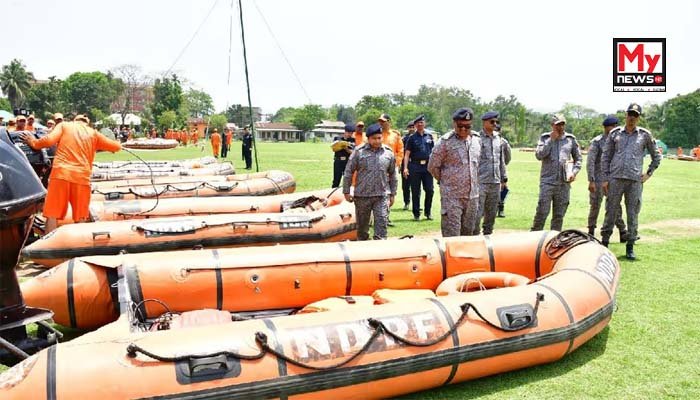NDRF Gears Up for Monsoon with Multi-State Disaster Preparedness Drill
Guwahati, Assam – In a proactive move to bolster its readiness for the impending monsoon season, the 1st Battalion of the National Disaster Response Force (NDRF), based in Patgaon, Guwahati, has successfully concluded a comprehensive Monsoon Preparedness and Mobilization Drill spanning three key northeastern states: Assam, Tripura, and Mizoram.
The extensive drill, orchestrated under the watchful eyes of Shri H.P.S. Kandari, the Commandant of the 1st Battalion NDRF, witnessed the active participation of over 550 trained rescuers. This significant deployment included dedicated Mahila rescuers and the crucial Canine squad, underscoring the battalion’s commitment to a multifaceted approach in disaster response. Notably, all 18 participating teams achieved successful deployment within the pre-defined timelines, highlighting their exceptional operational efficiency.
Held over two days, from April 26th to April 27th, 2025, the exercise focused intensely on simulating realistic flood water rescue scenarios, a common and critical challenge faced by the region during the monsoon. Strategic locations across the three states were carefully selected to mirror diverse geographical conditions: the Mini Stadium in Sonapur, Kamrup Metro district of Assam; the banks of the Gomati River in the Gomati district of Tripura; and Chungtlang Village in the Mamit district of Mizoram.
This wide-ranging exercise placed significant emphasis on key aspects of disaster management, including swift mobilization of rescue teams, effective search and rescue operations for those affected, the safe evacuation of individuals from disaster zones, and the immediate provision of essential pre-hospital emergency medical care. The scenarios incorporated both rural and urban settings, ensuring the teams were prepared for a variety of disaster landscapes.
The central aim of this large-scale drill was to rigorously assess and further enhance the operational preparedness of the NDRF teams. It served as a crucial evaluation of their capabilities to respond effectively and efficiently to a range of potential disasters, including not only floods but also landslides and earthquakes, which are prone to affecting the northeastern region. Furthermore, the exercise played a vital role in testing and strengthening the coordination mechanisms between different agencies involved in disaster response, ensuring a unified and seamless approach when real-life emergencies strike.

